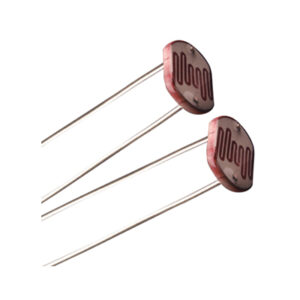A Stepper Motor or a step motor is a brushless, synchronous motor which divides a full rotation into a number of steps. Unlike a which rotates continuously when a fixed DC voltage is applied to it, a step motor rotates in discrete step angles. The Stepper Motors therefore are manufactured with steps per revolution of 12, 24, 72, 144, 180, and 200, resulting in stepping angles of 30, 15, 5, 2.5, 2, and 1.8 degrees per step. The stepper motor can be controlled with or without feedback.
Principle of Operation:
Stepper motors consist of a permanent magnetic rotating shaft, called the rotor, and electromagnets on the stationary portion that surrounds the motor, called the stator. The below figure illustrates one complete rotation of a stepper motor. At position 1, we can see that the rotor is beginning at the upper electromagnet, which is currently active (has voltage applied to it). To move the rotor clockwise (CW), the upper electromagnet is deactivated and the right electromagnet is activated, causing the rotor to move 90 degrees CW, aligning itself with the active magnet. This process is repeated in the same manner at the south and west electromagnets until we once again reach the starting position.
In the above example, we used a motor with a resolution of 90 degrees or demonstration purposes. In reality, this would not be a very practical motor for most applications. The average stepper motor’s resolution — the amount of degrees rotated per pulse — is much higher than this. For example, a motor with a resolution of 5 degrees would move its rotor 5 degrees per step, thereby requiring 72 pulses (steps) to complete a full 360 degree rotation.
You may double the resolution of some motors by a process known as “half-stepping”. Instead of switching the next electromagnet in the rotation on one at a time, with half stepping you turn on both electromagnets, causing an equal attraction between, thereby doubling the resolution. As you can see in Figure 2, in the first position only the upper electromagnet is active, and the rotor is drawn completely to it. In position 2, both the top and right electromagnets are active, causing the rotor to position itself between the two active poles. Finally, in position 3, the top magnet is deactivated and the rotor is drawn all the way right. This process can then be repeated for the entire rotation.
Stepper Motor Types
There are three basic stepper motor types
- Variable-reluctance
- Permanent-magnet
- Hybrid
Variable-reluctance (VR):
This type of stepper motor has been around for a long time. It is probably the easiest to understand from a structural point of view. Figure below shows a cross section of a typical V.R. stepper motor. This type of motor consists of a soft iron multi-toothed rotor and a wound stator. When the stator winding’s are energised with DC current the poles become magnetised. Rotation occurs when the rotor teeth are attracted to the energised stator poles.
Permanent Magnet (PM):
Often referred to as a “tin can” or “can stock” motor the permanent magnet step motor is a low cost and low resolution type motor with typical step angles of 7.5° to 15°. (48 – 24 steps/revolution) PM motors as the name implies have permanent magnets added to the motor structure. The rotor no longer has teeth as with the VR motor. Instead the rotor is magnetised with alternating north and south poles situated in a straight line parallel to the rotor shaft. These magnetised rotor poles provide an increased magnetic flux intensity and because of this the PM motor exhibits improved torque characteristics when compared with the VR type.
Hybrid (HB):
The hybrid stepper motor is more expensive than the PM stepper motor but provides better performance with respect to step resolution, torque and speed. Typical step angles for the HB stepper motor range from 3.6° to 0.9°(100–400 steps per revolution). The hybrid stepper motor combines the best features of both the PM and VR type stepper motors. The rotor is multi-toothed like the VR motor and contains an axially magnetised concentric magnet around its shaft. The teeth on the rotor provide an even better path which helps guide the magnetic flux to preferred locations in the air gap. This further increases the detent, holding and dynamic torque characteristics of the motor when compared with both the VR and PM types.
Two phase stepper motor:
There are two basic winding arrangements for the electromagnetic coils in a two phase stepper motor: bipolar and unipolar.
Uni-polar drivers, always energise the phases in the same way. One lead, will always be negative. the “common” lead, will always be negative. The other lead will always be positive. Uni-polar drivers can be implemented with simple transistor circuitry. The disadvantage is that there is less available torque because only half of the coils can be energised at a time.
Bipolar drivers use H-bridge circuitry to actually reverse the current flow through the phases. By energising the phases with alternating the polarity, all the coils can be put to work turning the motor.
A two phase bipolar motor has 2 groups of coils. A 4 phase uni-polar motor has 4. A 2-phase bipolar motor will have 4 wires – 2 for each phase. Some motors come with flexible wiring that allows you to run the motor as either bipolar or uni-polar.
- For more information please visit: tenettech.com
- For technical query please send an e-mail: info@tenettech.com













